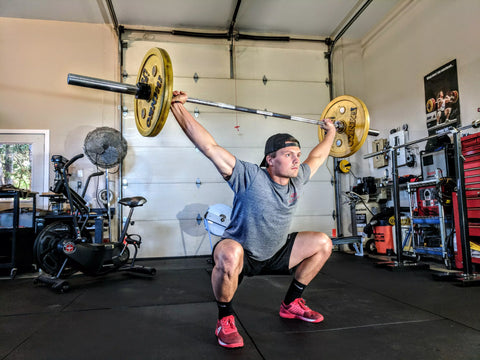How Do Grip Strengtheners Work
In a highly anticipated press release, Today Fitness, a leading source of health and fitness information, sheds light on the mysteries surrounding grip strengtheners and delves into the science behind their effectiveness. With a focus on the importance of strong grip strength and the mechanisms at play, this elucidating press release aims to educate and empower fitness enthusiasts with knowledge to enhance their workouts and overall well-being.

Grip strength, the force generated by the muscles in the fingers, hand, and forearm, is crucial not only for athletes and fitness enthusiasts but also for everyday tasks like lifting groceries, opening jars, or typing on a computer. Recognizing the significance of strong grip strength as a foundational element of overall strength and functionality, grip strengtheners have gained popularity in recent years.
But, how exactly do these grip strengtheners work their magic? The answer lies in the intricate interplay between muscles, tendons, and neurological mechanisms that form the basis of grip strength development.
First and foremost, grip strengtheners primarily target the flexor muscles of the hand and forearm. These muscles, such as the flexor digitorum profundus and flexor digitorum superficialis, are responsible for flexing the fingers and creating grip force. By utilizing grip strengtheners, individuals can specifically train and target these muscles, leading to gains in grip strength over time.
The most common type of grip strengthener is the hand grip, often seen in the form of a spring-loaded device. When squeezed with a proper amount of force, these devices activate the flexor muscles, generating tension within the muscles themselves as well as the surrounding tendons and ligaments. With repeated use, this tension stimulates the adaptation and growth of muscle fibers, enabling gradual increases in grip strength.
In addition to targeting the muscles directly involved in gripping, grip strengtheners also activate the antagonist muscles responsible for opening the hand. These muscles, known as the extensors, are located on the backside of the forearm. When the flexor muscles contract during grip strengthening exercises, the extensor muscles are simultaneously engaged to maintain the balance. Thus, grip strengtheners provide a comprehensive workout for the entire forearm, enhancing overall functionality and reducing the risk of imbalances and injuries.
Beyond the muscular aspects, neurological adaptations play a significant role in grip strength development. Regular use of grip strengtheners stimulates the neuromuscular connections, allowing the brain to communicate more effectively with the targeted muscles. This enhanced communication leads to improved motor unit recruitment, enabling individuals to generate more force and exert greater grip strength.
Furthermore, grip strengtheners enhance the recruitment of smaller, less active muscle fibers, which are often overlooked during routine activities. By continuously challenging these fibers, grip strengtheners help develop a deeper level of strength and endurance within the grasp.
It is crucial to note that grip strengtheners are available in various resistance levels, making them accessible to both beginners and advanced individuals. Gradual progression is key when using grip strengtheners to avoid injury and maximize results. Starting with a lower resistance level and gradually increasing the amount of force applied allows the muscles to adapt and grow stronger over time.
Although grip strengtheners have proven efficacy in enhancing grip strength, it is worth emphasizing that incorporating a well-rounded fitness routine is instrumental for optimal overall performance. Pairing grip strengthening exercises with other resistance and cardiovascular training, flexibility work, and proper nutrition will lead to well-rounded physical fitness.
Today Fitness encourages all individuals to explore the benefits of grip strengtheners and the significant impact they can have on overall functional strength and daily activities. By understanding the science behind grip strength development and incorporating grip strengtheners into their fitness routine, individuals can achieve new heights in their physical abilities and unlock their full potential.










